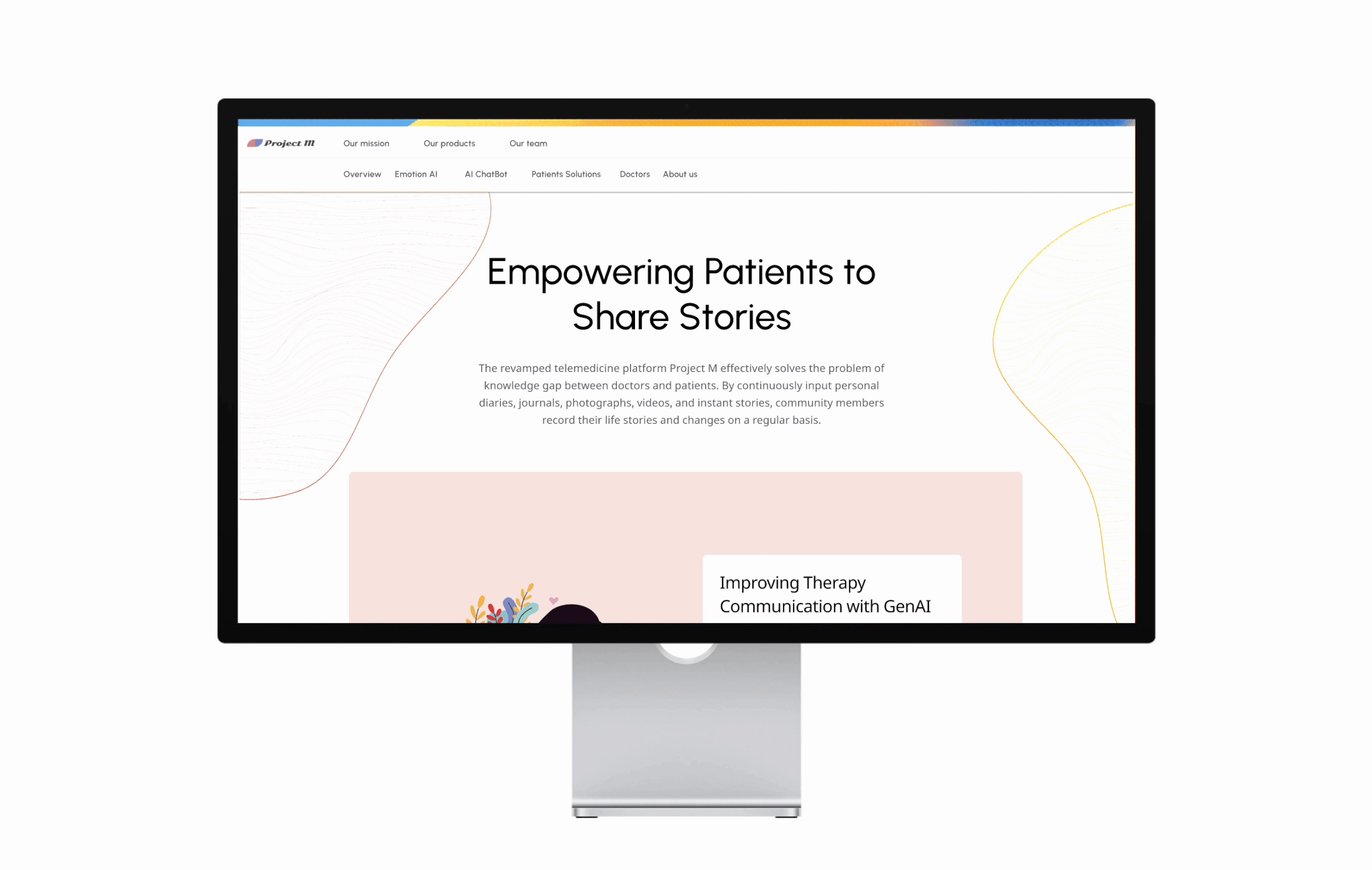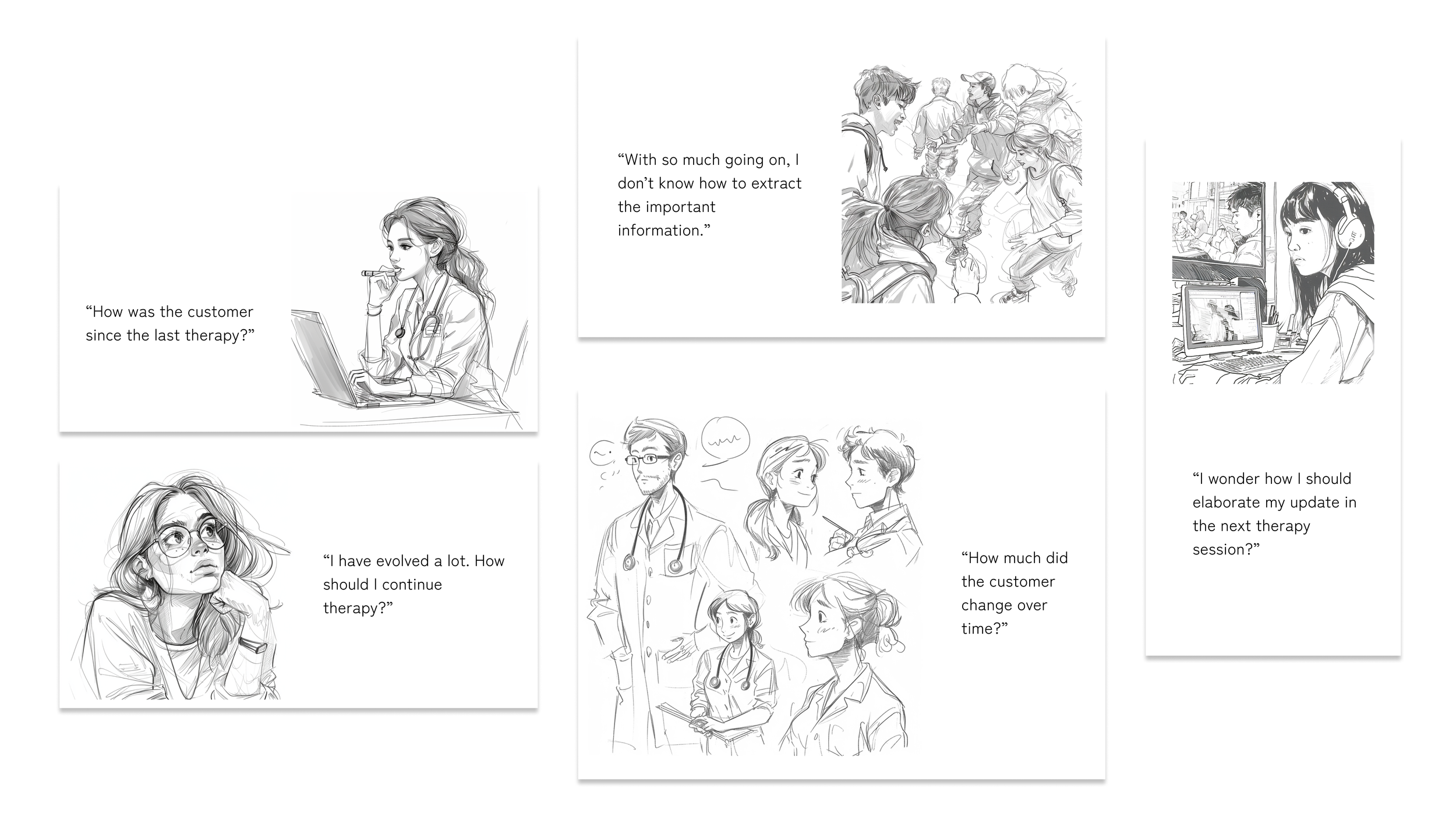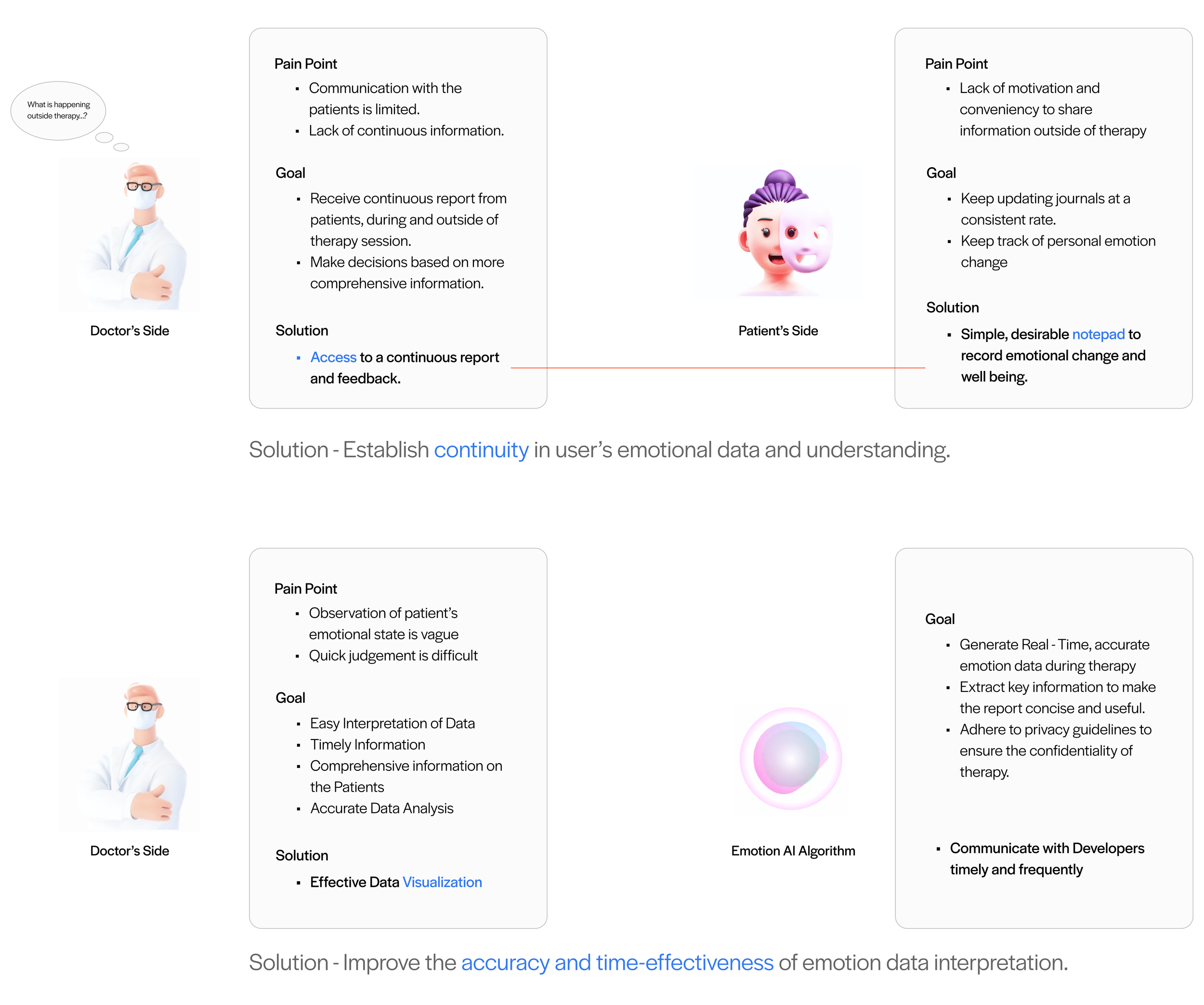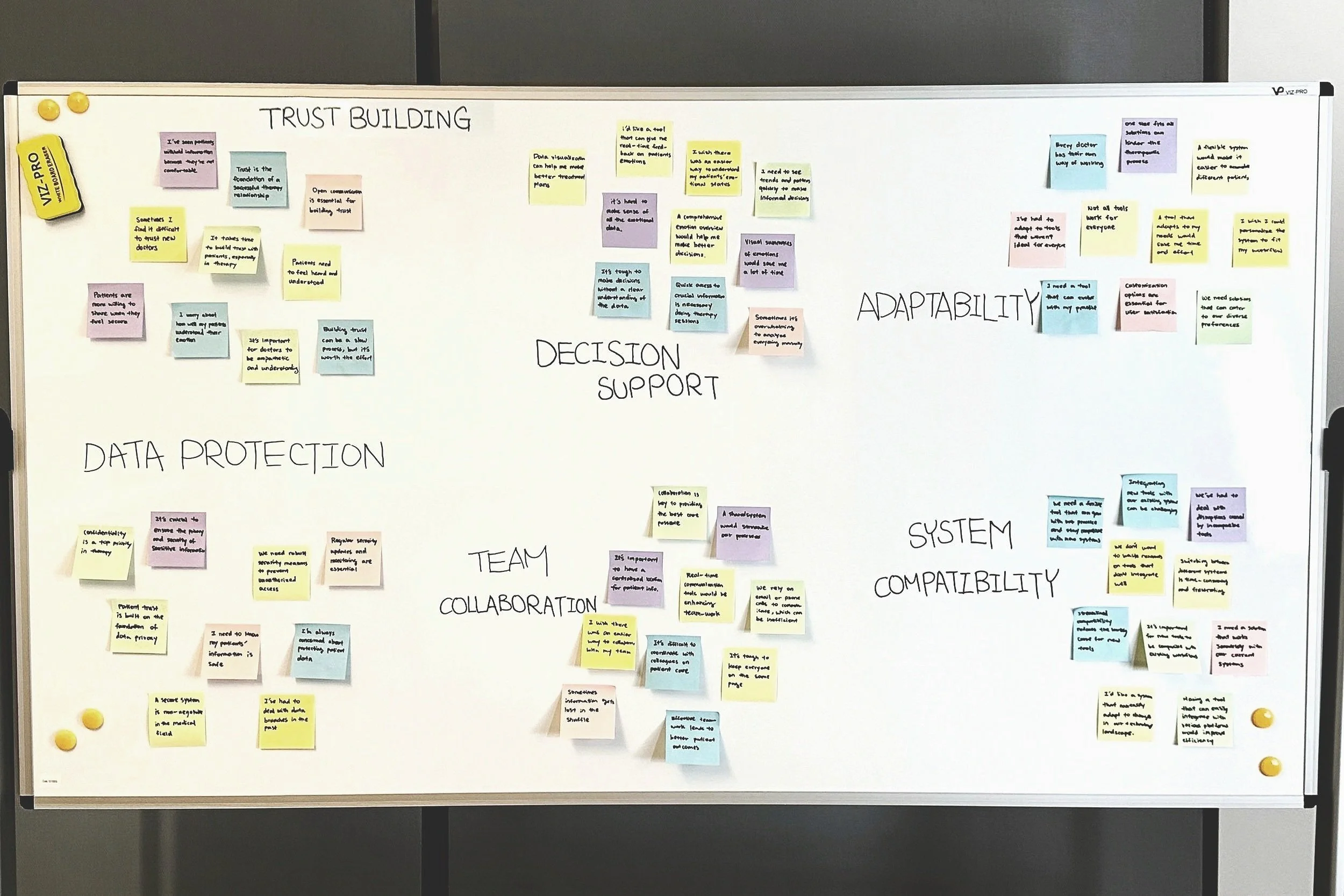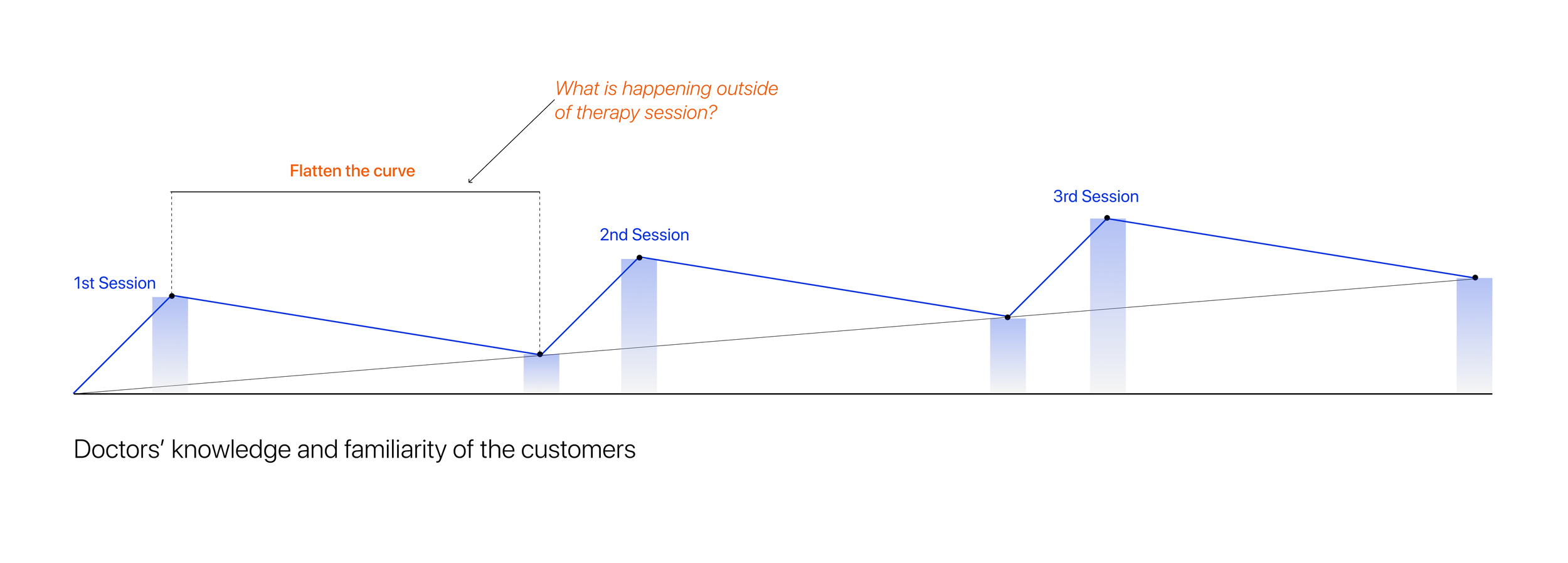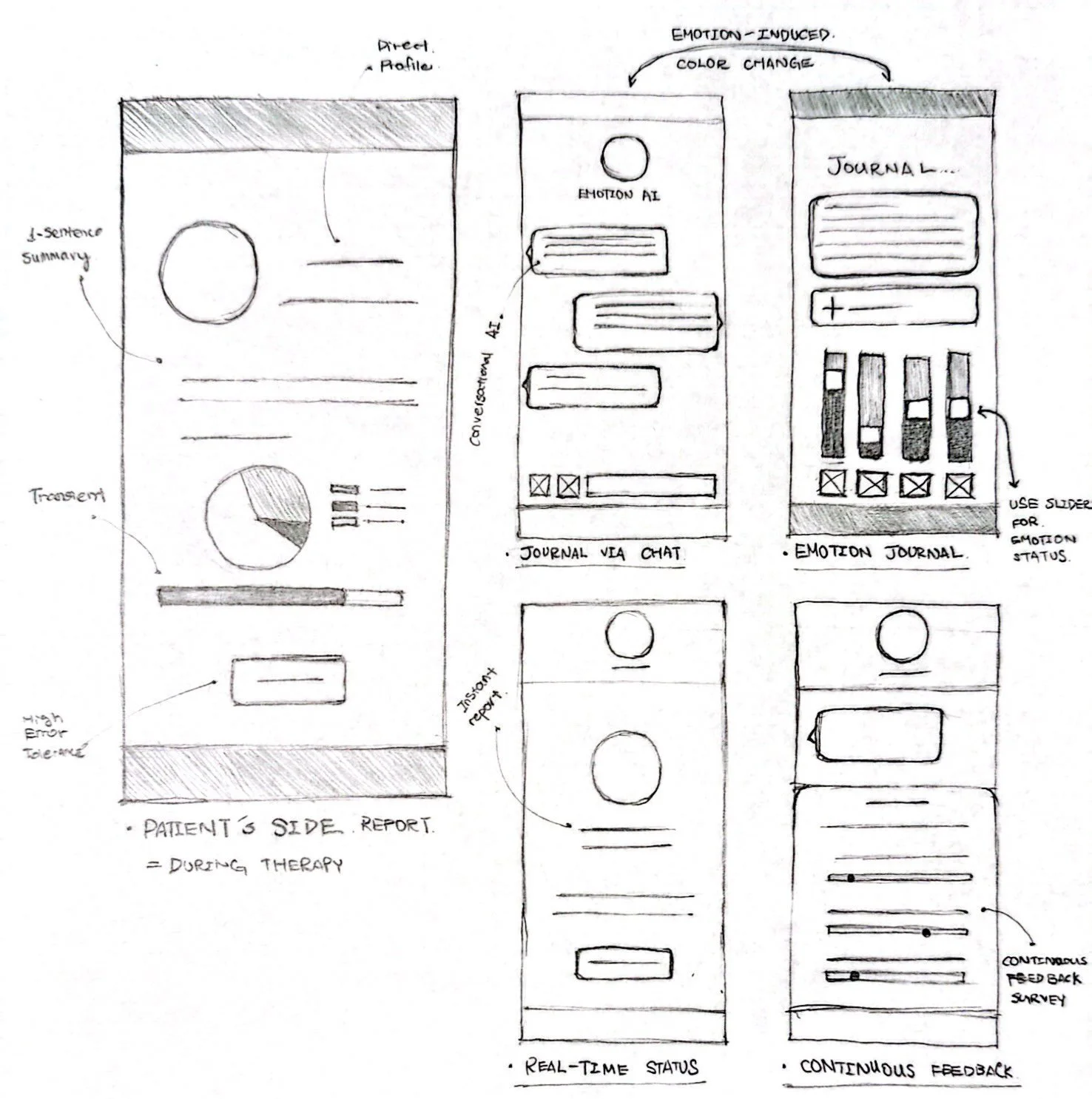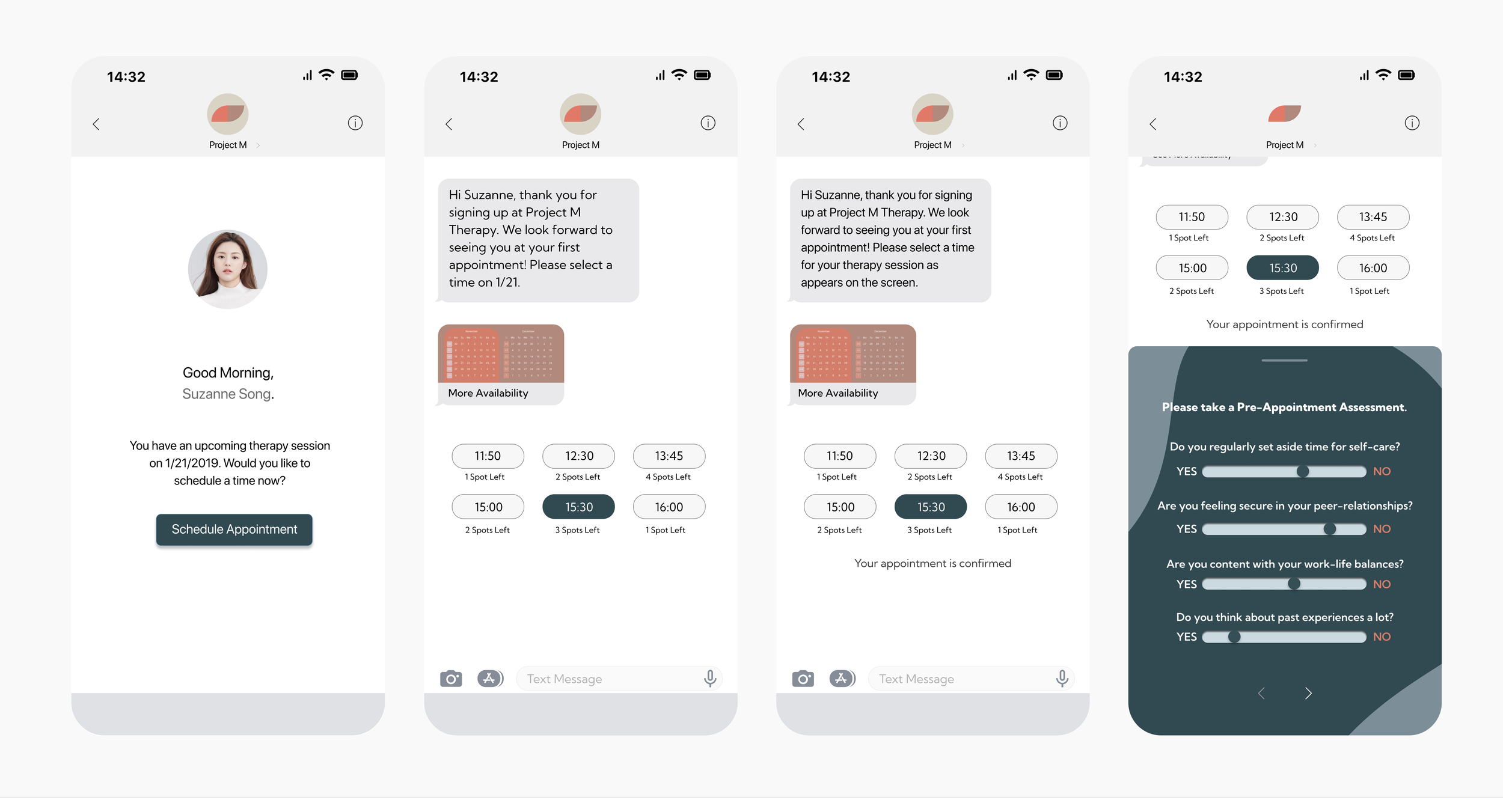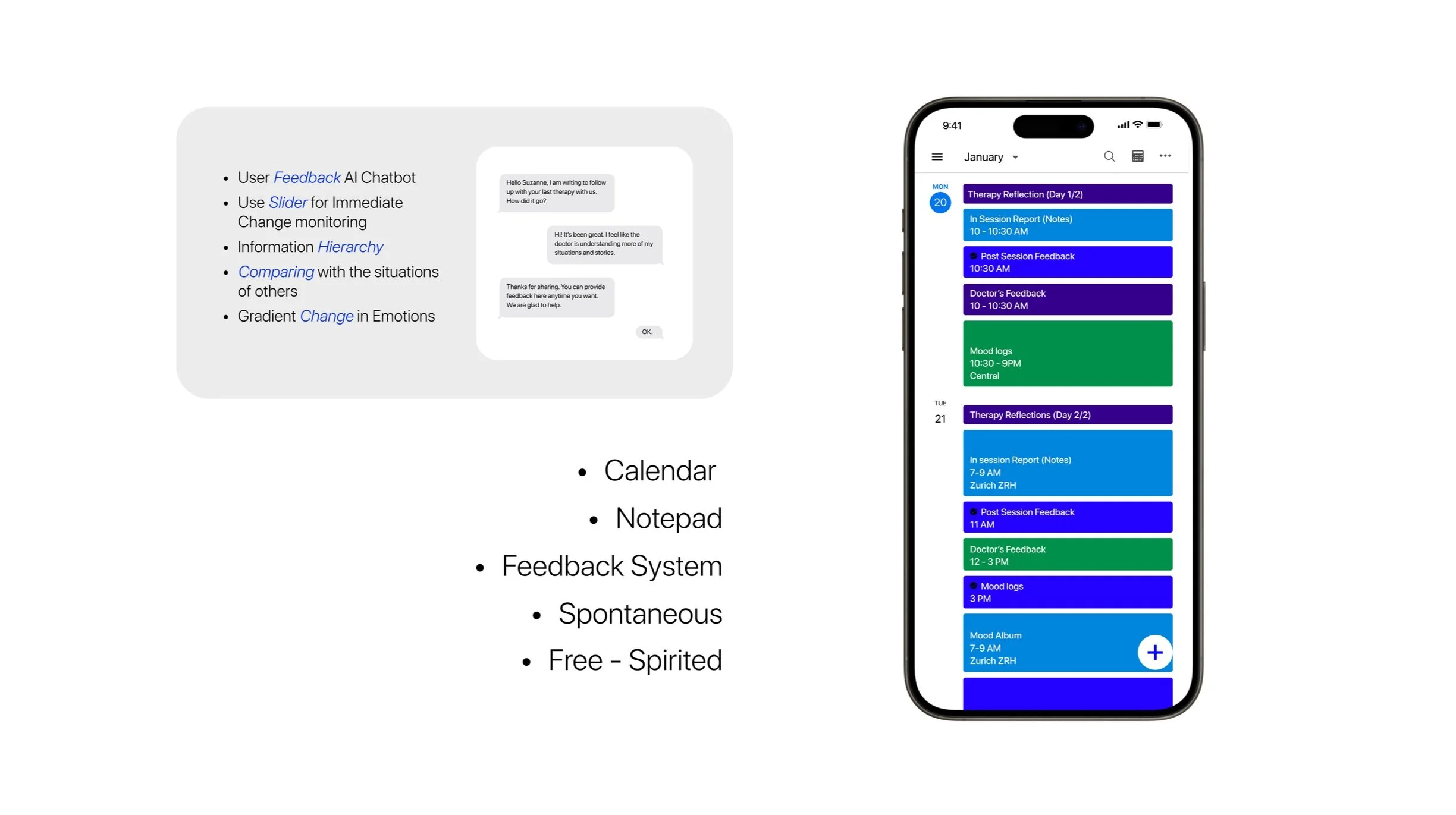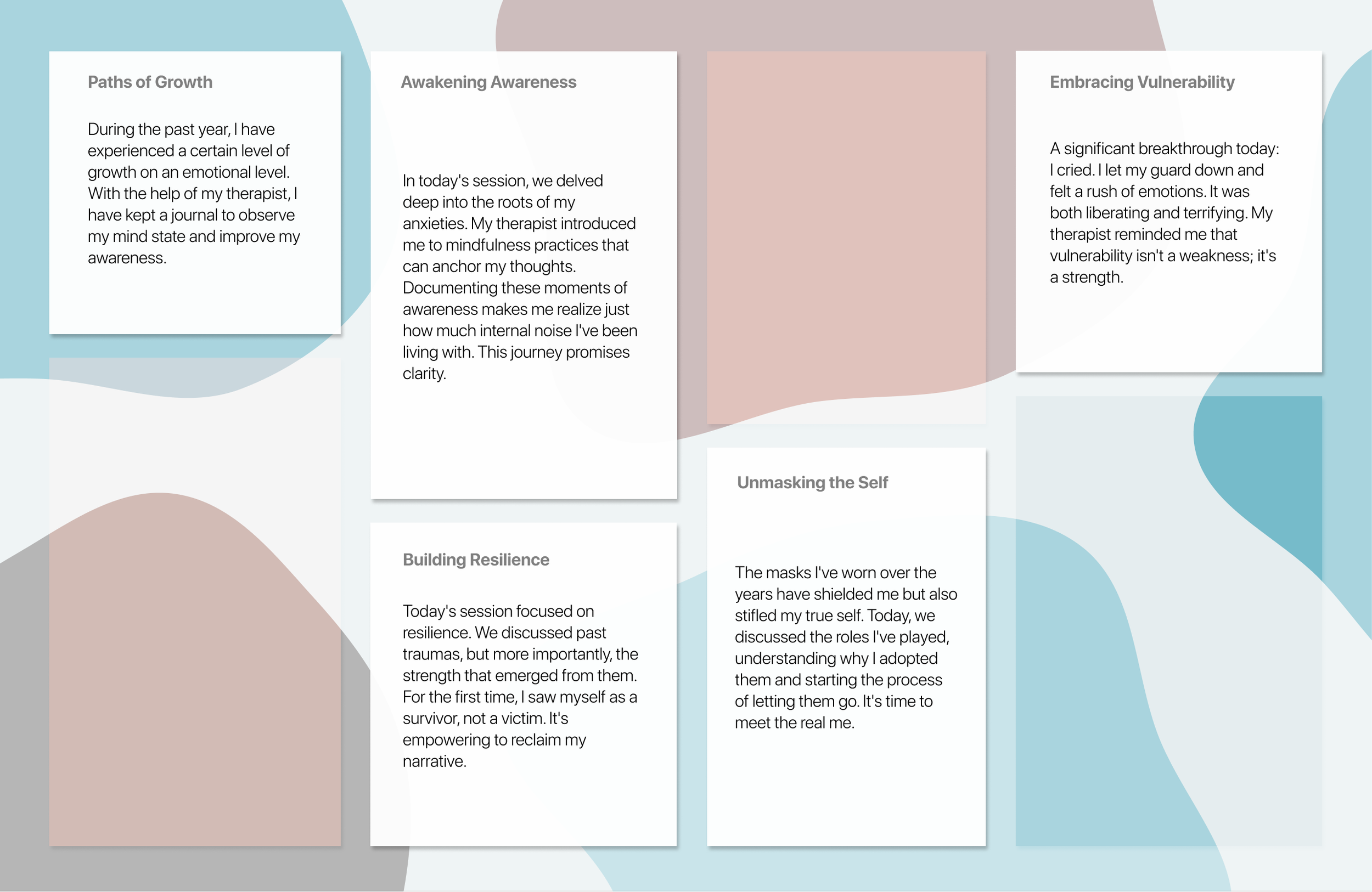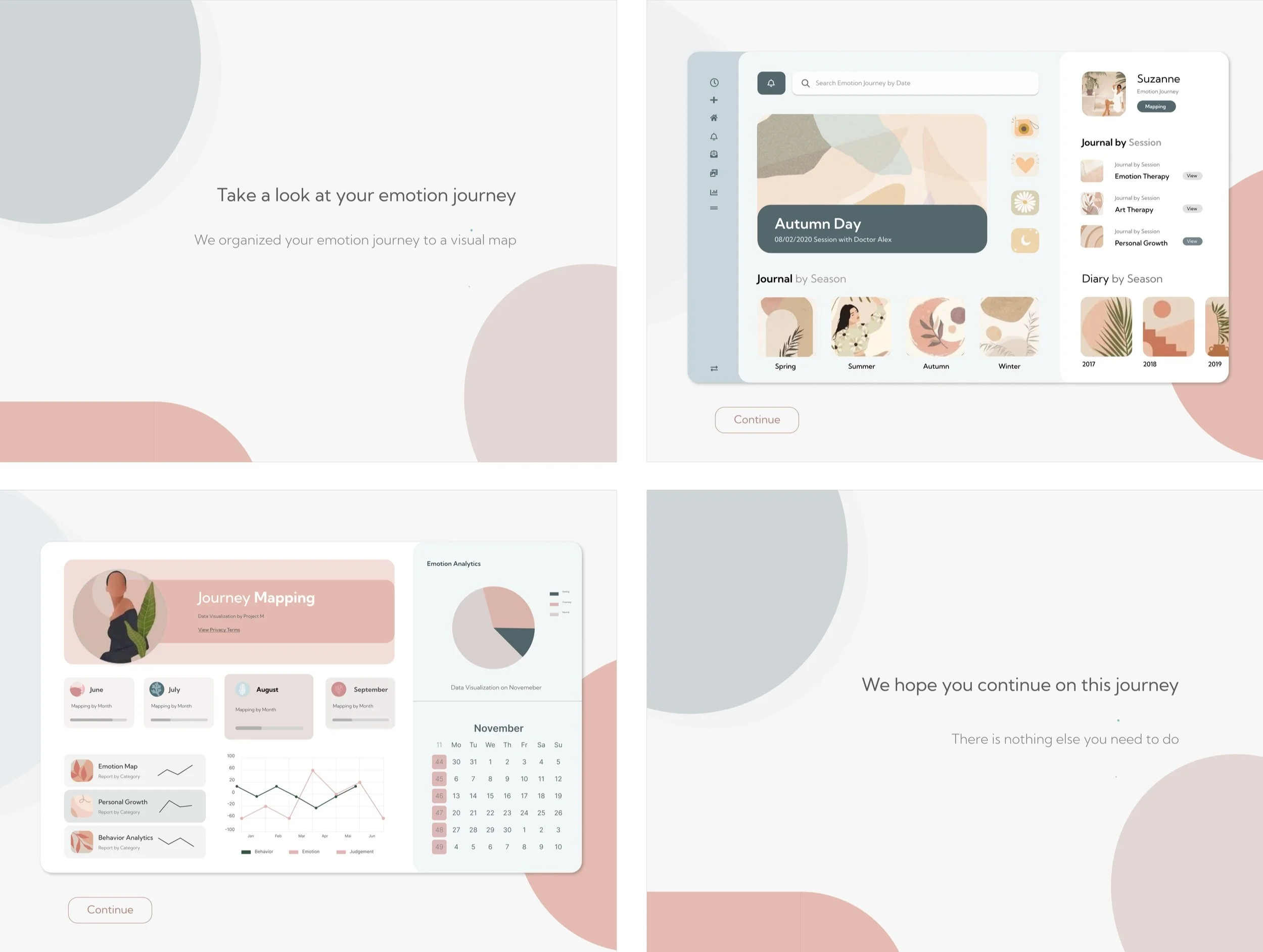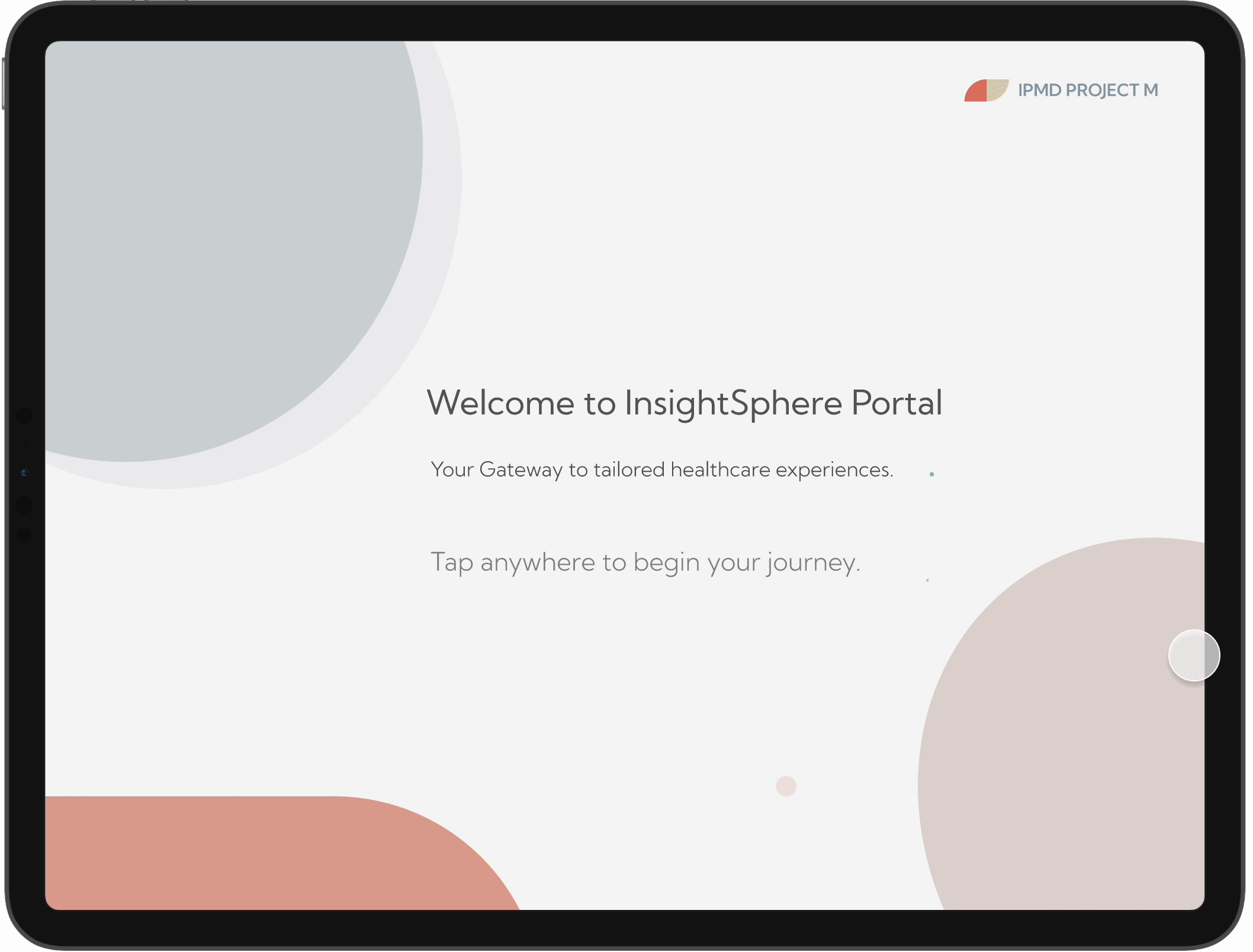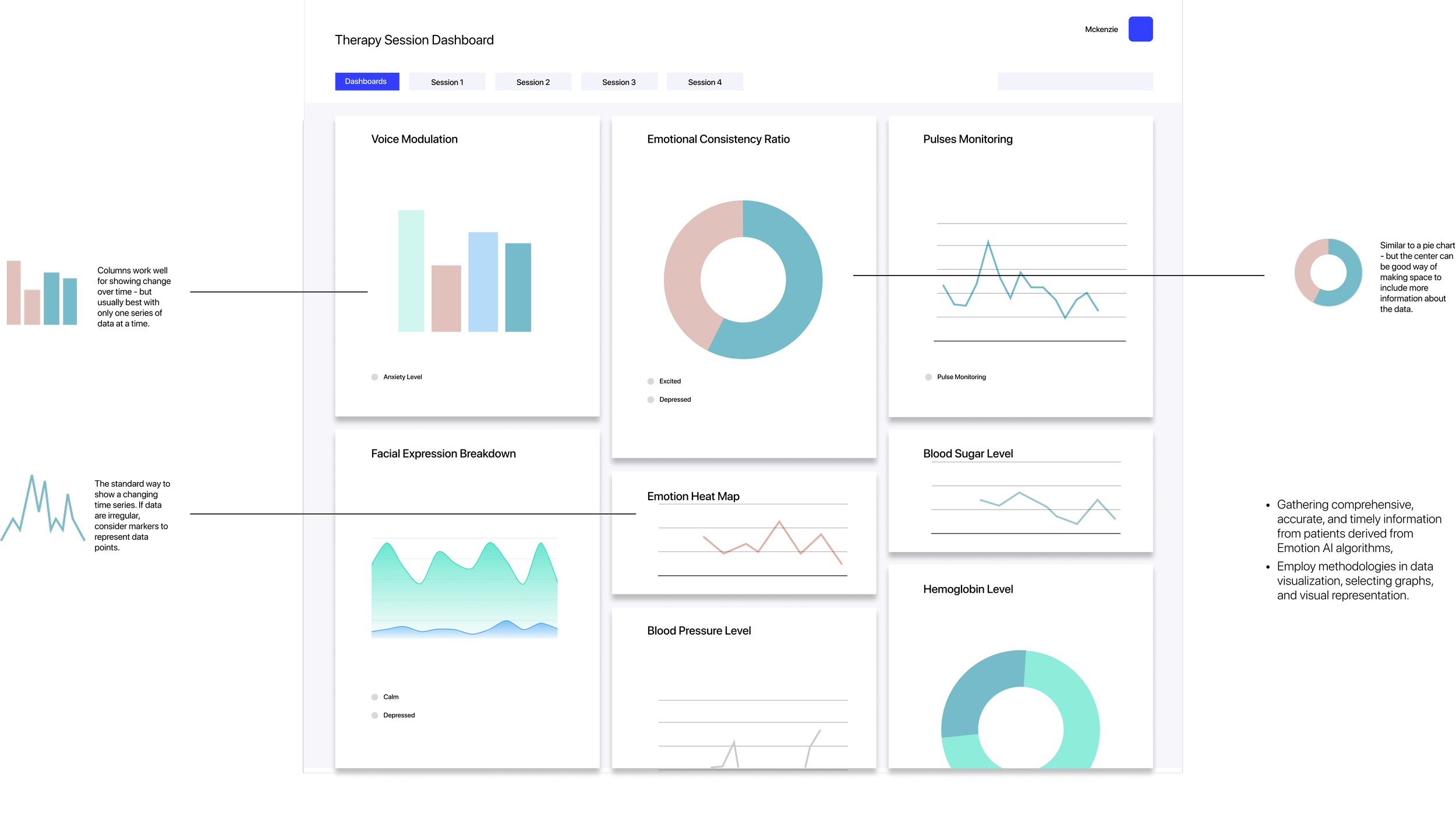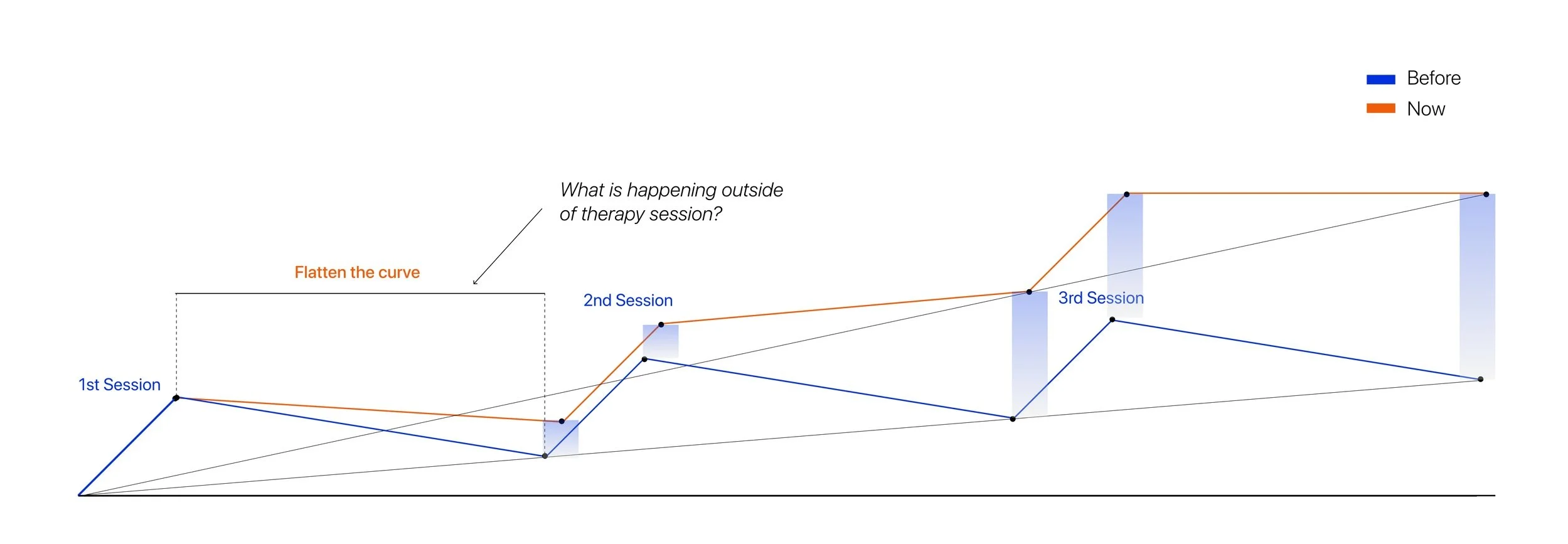ROLES UIUX Design Product Management
TEAM Matthew Lee, Kevin Choi, Scott Alexander
TIME Aug 2022 - Present UX Designer @IPMD
PROJECT BACKGROUND
The IPMD Project M, Emotional AI, is initiated in collaboration with Google Cloud to address the growing need for effective mental health care. With approximately 1 in 5 adults experiencing mental illness in a given year, and more than 50% of people with mental health issues not receiving treatment, there is a significant demand for innovative solutions that improve the effectiveness of therapy. As the sole designer for this project, I aim to address the problem of enhancing the effectiveness of therapy by visualizing emotion data from AI algorithms and by encouraging users to share their behavioral and thinking record outside of therapy session.
How Might We design an intuitive system that enables doctors to receive and interpret emotion data accurately and timely, and that encourages patients to share more information outside therapy session to reach the common goal of online therapy efficacy?
Touchpoint 1: Heuristic Scheduling
The scheduling system enhances the patient scheduling process by integrating machine learning algorithms that predict optimal appointment times based on patient history and provider availability. The slot-selection page utilizes heuristic shortcuts to allow patients are matched with a medical provider in the shortest time possible.
Touchpoint 2: Instant Screening
When the patient logs into the system for a check-in, Emotion AI will assess the patient's emotional states based on heart-rate, facial expression, and level of concentration, offering ambient lighting and calming music options accordingly.
Touchpoint 3: Therapy Metrics
Except for emotional analytics basics, a more advanced biometric system is available to capture physical vitals and to scan for signs of emotional distress. All captured data feeds into a real-time health dashboard for doctors.
Touchpoint 4: Continuous Diary
After the therapy, patients will be given an instant rating system to record their emotional change in their daily life. Patients can conduct intuitive, simple, and focused way of recording their emotions through use sliders for immediate change. They are also encouraged to proactively write journals to share with the doctors.
Touchpoint 5: Community Thread
The community notepad operates as an interactive webpage. Patients can share their healthcare journey or view others' therapy experiences. Machine learning algorithms suggest community stories that might be most relevant to the patient’s current emotional state and growth paths.
Touchpoint 6: Doctor’s Dashboard
The primary concerns about the user experience journey on the doctors end are gathering comprehensive, accurate, and timely information from patients derived from Emotion AI algorithms. The methodology of data visualization, selecting graphs, and visual representation are critical
Research Methodology - Interviews and Surveys
85%
Patients Lacking Motivation
72%
Patients Lacking Confidence
90%
Doctors Desiring Real-Time Data
Research Insights
Low Efficiency
High Cognitive Load
Working with the research team, I have chosen two most relevant research methodologies: interviews and surveys. Interviews allow for in-depth exploration of doctors' experiences, needs, and challenges related to interpreting patients' emotions during therapy sessions, while surveys provide quantifiable data on a larger scale, enabling us to identify patterns and trends across a wider range of participants. Key findings include:
85% of patients reported the lack of motivation to share information and write journals after the therapy session.
72% of patients reported that the there is a communication gap with doctors that results in lack of confidence.
90% of doctors agreed that having access to real-time emotional data could improve the effectiveness of therapy.
SYNTHESIS IDEATION
To synthesize our research findings, we used affinity diagramming to cluster interpretation notes from contextual inquiries. This method helped us identify patterns and group our findings by themes, allowing us to categorize users' pain points and generate six key insights.
The Patient’s side should include simplified, clear, and efficient design that allows them to use it in the transient moment during therapy session.
The design should be familiar, conversational, and consistent to make the patients feel at ease when recording their stories.
The design should be informative and present an organized collection that document patients’ change of mind, showing a path of growth to generate motivation.
The scheduling system enhances the patient scheduling process by integrating machine learning algorithms that predict optimal appointment times based on patient history and provider availability. The slot-selection page utilizes heuristic shortcuts to allow patients are matched with a medical provider in the shortest time possible.
Heuristic-based Scheduling System
After the therapy, patients will be given an instant rating system to record their emotional change in their daily life. Patients can conduct intuitive, simple, and focused way of recording their emotions through use sliders for immediate change. They are also encouraged to proactively write journals to share with the doctors.
Continuous Journaling
Success Metrics:
Improved User Retention Rate
Reduce Premature Suspension
Telemedicine Platform Overall User Growth
Improved User Satisfaction of Emotional AI Therapy
Positive Feedback from Doctors on Improved Decision Making
When the patient logs into the system for a check-in, Emotion AI will assess the patient's emotional states based on heart-rate, facial expression, and level of concentration.
Variety in Presentation Screening
Except for emotional analytics basics, a more advanced biometric system is available to capture physical vitals and to scan for signs of emotional distress. All captured data feeds into a real-time health dashboard for doctors.
Biometric System and Personal Detail
Users can scroll through or contribute to stories using a swiping interface. Moderated content on therapy experiences sharing will appear based on the user’s emotional profile.
The community thread operates as an interactive webpage. Patients can share their healthcare journey or view others' therapy experiences. Machine learning algorithms suggest community stories that might be most relevant to the patient’s current emotional state and growth paths.
Community Thread
The notepad is a motivational mechanism for the patients to record their therapy sessions as single stories on “sticky notes” shaped interface, where concise, instant, sporadic, and inspirational. They are captioned with a short, fun, and abstract phrases that aim to generate a sense of creativity.
Individual Notepad - Growth Path
Say good-bye to the lengthy traditions of diary writing. With real-time SMART analysis, carefully selected visual elements, and an interactive organization of time, patients can freely express themselves in an organized, meaningful, and concise manner. The density of this diary also gives patients a sense of accomplishment and quality.
Smart Diary
Continuous User Feedback
Continuous user-feedback is important to IPMD, just like the continuous report from patients is important to doctors. We want to provide an optimized experience with the most up-to-date technology and their interfaces to assist users. So share with us, how was your therapy experience, and how was your user journey?
In order to address the concerns about the user experience journey on the doctors end of gathering comprehensive, accurate, and timely information from patients derived from Emotion AI algorithms, I have employed methodologies in data visualization, selecting graphs, and visual representation are critical.
Doctor’s ViewPoint
IMPACT
Takeaways
outcome
The Communication Gap is Bridged between Patients and Doctors.
Doctor’s Knowledge and Familiarity of the Patients
Reduced Cognitive Load on the Doctor’s End
45 Minutes Cognitive - Behavioral Therapy Session
Setting SMART goals with metrics at the Ideation stage, and modify them along the way will set better direction.
The Importance of Continual Feedback and Reporting is not limited to building relationship between patients and doctor, but applies to the broader scope of relationship between users, patients, external stakeholders, and teams at Project M.
Communicating with Devs regularly in an agile way is critical when working with complex data.
Establishing Continuity in communication is fundamental in building trust, understanding, and efficient therapy. This can be applied to the larger user experience design discipline
Improved user retention rate by 20%
Improved therapy efficiency
Reduced Doctor’s Cognitive Load
Increased user feedback and user satisfaction
